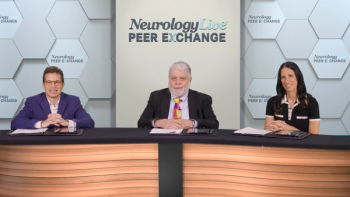
Epileptic Seizure Cycles Found to be Patient-Specific, Robust
The authors suggested that the detection and tracking of seizure cycles on a patient-specific basis should be standard in epilepsy management practices.
Mark Cook, MBBS
New retrospective study results have suggested that seizure cycles in epilepsy are robust, patient-specific, and much more widespread than previously believed.
It has been long suspected that epilepsy is, to some extent, directed by cyclic rhythms which cause seizure rates to rise and fall over weeks, months, or years—often seeming to defy any sort of natural explanation. Ultimately, the cohort analysis revealed that more than 80% of patients showed circadian modulation of their seizure rates, while between 7% and 20% showed clear weekly cycles.
“Seizures feature very strong cyclical behavior, which is highly individual,” study author Mark Cook, MBBS, the director of the Graeme Clark Institute and the Sir John Eccles Chair of Medicine at the University of Melbourne, told NeurologyLive. “Understanding these cycles will allow better management of individuals when better understood and analyzed. As well, it will allow more accurate seizure forecasting, which has the potential to improve safety and quality of life for people with epilepsy.”
In order to assess the seizure cycles of patients with epilepsy, Cook and colleagues utilized data from patients in 2 of the most comprehensive seizure databases, SeizureTracker (n = 1118) and NeuroVista (n = 12). From NeuroVista, only patients with at least 30 clinical seizures were included, while SeizureTracker patients needed a minimum of 100 seizures to be included.
In total, 891 patients (80%) in the SeizureTracker cohort and 11 patients (92%) in the NeuroVista cohort showed 24-hour modulation of their seizure rates. In the NeuroVista cohort, 3 patients displayed a week-long cycle, and 2 patients displayed 2-week cycles. In the SeizureTracker cohort, between 77 and 233 patients (7% to 21%) displayed clear and strong circaseptan rhythms with their seizures, and between 151 and 247 patients (14% to 22%) showed significant cycles longer than 3 weeks.
“The findings were what we had hoped for, though we were surprised to find such strong patterns at 7 days,” Cook, who also directs the Department of Neurology at St. Vincent's Hospital, said. “We confirmed the very strong circadian cycles though, and also that long cycles, like those at around 28 days, were as common in men as women, contrary to much earlier work.”
The findings, Cook and colleagues noted, align with the accepted consensus that there is some level of diurnal influences on most epilepsies. The clinical impact of better understanding variations in seizure rates could be quite robust, with Cook suggesting that the detection and tracking of seizure cycles on a patient-specific basis should be standard in epilepsy management practices.
“We started research into seizure prediction some years ago and performed a first-in-man study of a novel device,” Cook said. “We obtained many insights through the study and observed some interesting patterns in seizures. Because the study was small, we wanted to see if we could replicate the findings using a large database available through SeizureTracker. We found the same rhythms and patterns as in the smaller study, which was very exciting.”
This understanding of seizure rates and rhythms could have the ability to inform the use of medications, as well. Although there are almost 30 available medications, there is much variance between each’s usage, mechanism of action, and tolerability profile. Despite this, seizure control is only achieved roughly 70% of the time—making any opportunity to better understand how seizure rates work helpful.
Steven S. Chung, MD, the executive director and program chair of the Neuroscience Institute and director of the Epilepsy Program at the Banner University Medical Center reiterated this need. He told NeurologyLive in September that “what [epileptologists] try to do is get as close as possible to that complete resolution or complete treatment of seizures. There are many different areas of need. If you could only write one sentence on unmet needs, it would be that not everyone is having full seizure control despite many medications.”
REFERENCE
Karoly PJ, Goldenholz DM, Freestone DR, et al. Circadian and circaseptan rhythms in human epilepsy: a retrospective cohort study. Lancet Neurol. 2018;17(11):977-985. doi: 10.1016/S1474-4422(18)30274-6.
Newsletter
Keep your finger on the pulse of neurology—subscribe to NeurologyLive for expert interviews, new data, and breakthrough treatment updates.







































